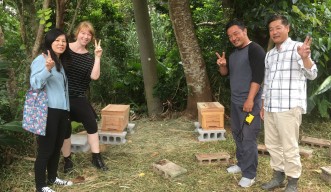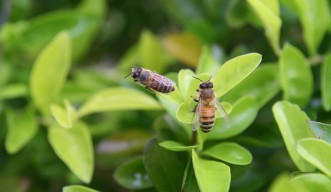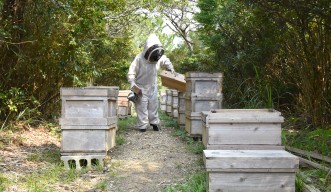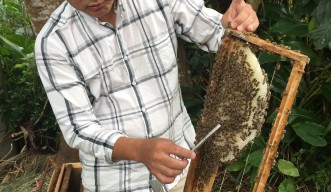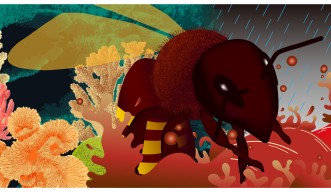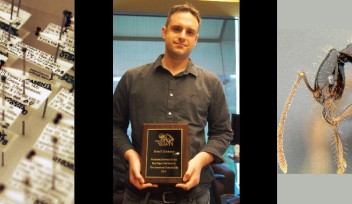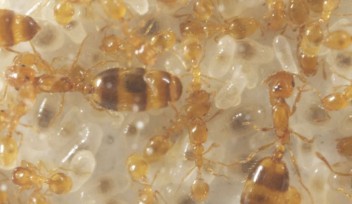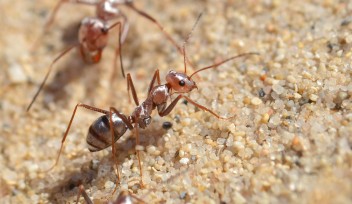Honeybees Help Save Okinawan Coral?!
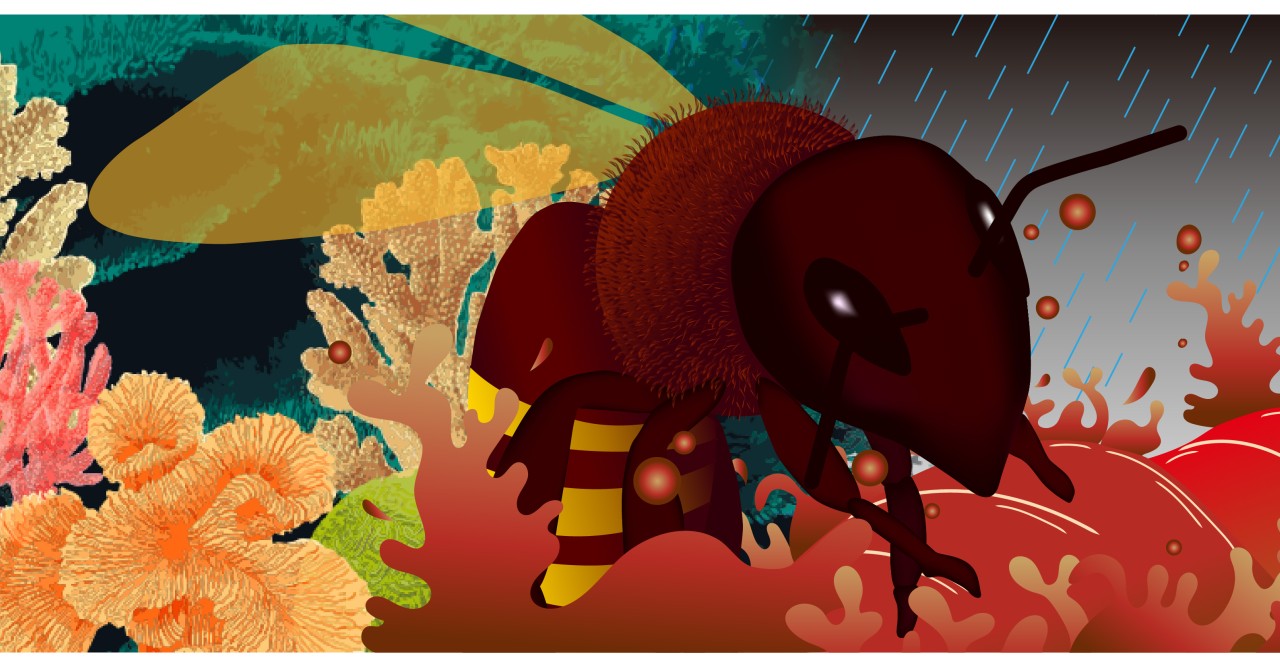
Mutualisms are one of the most common interactions in the natural world. That relationships of mutual benefit are so common suggests something important — they are a good survival strategy. In academia, however, laboratories compete to be the first to make discoveries. And while competition encourages scientific progress, many challenges facing our planet could be better solved through collaboration.
Scientists at the Okinawa Institute of Science and Technology Graduate University (OIST) and the nearby Onna Village Office have joined forces in a new partnership with mutual benefit — using honeybees to protect coral reefs from red soil erosion. The collaboration will support Onna’s marine conservation efforts, and studying the honeybees will help the OIST team with their research on colony collapse.
“So far we are impressed with Onna’s beekeeping expertise, and we look forward to seeing how the project unfolds,” says Dr. Vienna Kowallik, a postdoctoral scholar in OIST’s Ecology and Evolution Unit.
“And we’re particularly grateful to Ryo Kirino for getting the whole thing started.”
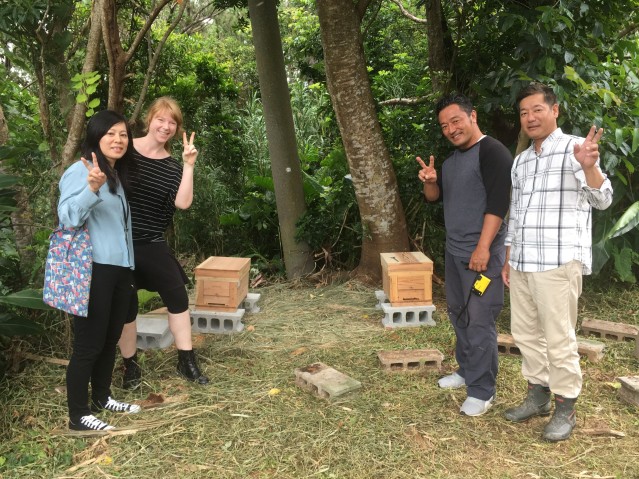
Kirino-san’s quest to stop red soil runoff
Ryo Kirino is the Onna Village contact who reached out to OIST after getting promoted into a newly-created position — Agricultural Environment Coordinator. Like governments across the globe, Okinawa Prefecture has been tasked with supporting the United Nations Sustainable Development Goals, or SDGs, a bold set of objectives to improve our planet by 2030. The Japanese government has now designated Onna as one of the “SDGs Future Cities” in recognition of its marine conservation initiatives.
For Onna, improving life below water means cracking one of Okinawa’s biggest problems — red soil erosion. When it rains, the soil’s surface gets saturated with water, forming small rivers that carry sediment into the ocean. Around 80% of red soil comes from agriculture, as farming plots are more susceptible to soil surface saturation. The resulting sediment can cause devastating coral bleaching events — and turn the ocean a distressing red.
While the prefecture has had some success in reducing red soil, including the Red Soil Ordinance formed in 1995, limited agricultural regulation has allowed the problem to persist. And so Kirino-san, along with nine other newly-appointed coordinators across Okinawa, was assigned a simple-sounding task — minimize red soil erosion.
“Simple, perhaps, if this was as easy as stopping agriculture,” says Kirino-san. “Growing crops is a source of income for our farmers. Also, red clay is deeply rooted in Okinawan culture, and is used extensively for tiles, shisa statues, and yachimun pottery.”

Kirino-san had to get creative. He couldn’t stop agriculture — and he couldn’t stop the rain. One option could be to work on increasing plant diversity. Unlike monoculture farming, more diverse plots usually allow the soil to better absorb water. This, in turn, would result in less red soil runoff — and less sediment reaching the ocean. But convincing farmers to plant diverse plants in place of the crops providing their income was going to be tough.
As Kirino-san sat in his office a thought occurred to him. What if he could use bees? Honeybees pollinate many flowers — allowing for the sort of diversity that could minimize red soil runoff. There were several abandoned farming plots that could be repurposed into flower fields. Local farmers, meanwhile, could be encouraged to dedicate part of their land to honeybees, providing they received an economic benefit. Providing the project went well, people might be more interested in learning about red soil, and the village could be transformed by new flower gardens.
Kirino-san wanted to educate local farmers in the craft of beekeeping, so that they could use their space to produce and sell honey as an extra source of income. It seemed like an elegant fix to red soil erosion that would also bring benefit to farmers and local tourism — as well as contributing to Onna’s “SDGs Future Cities” mission. But Kirino-san still had a problem. He needed some bees.
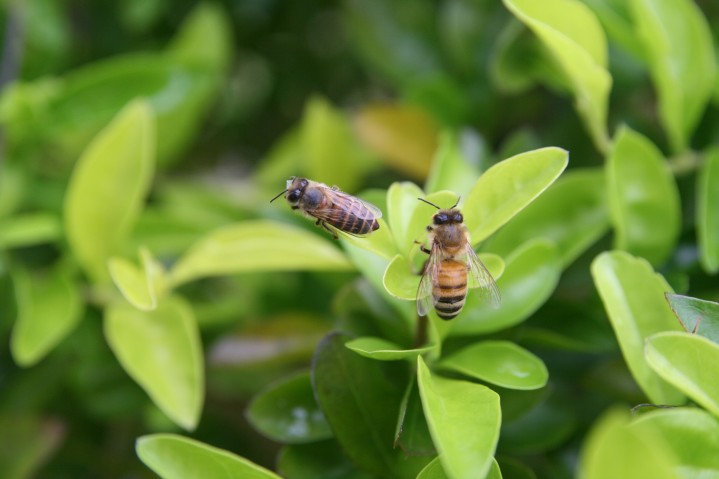
Making sense of the honeybee microbiome
Meanwhile, in an OIST laboratory, Professor Alexander Mikheyev and Dr. Maeva Techer were trying to make sense of the Varroa destructor, a parasitic mite that attacks and feeds on honeybees. The Varroa mite and the viruses it transmits are a honeybee’s worst nightmare, and they decimate colonies across the globe. The mite is a particular problem for Apis mellifera, the European honeybee most widely used to make honey.
Due to the relatively short time the species have been interacting, the European honeybee has little resistance against Varroa. On the other hand, the Japanese honeybee Apis cerana japonica is resilient against Varroa. As the mite’s original host, it has had a long time to develop resistance against its attacks. The team wanted to understand the Japanese honeybee’s defenses, and they had a hunch.
“Just like humans, honeybees have a microbiome — a community of bacteria living in and on the bee,” says Vienna. “This microbiome could be helping the Japanese honeybee defend against the Varroa mite — and many other threats.”
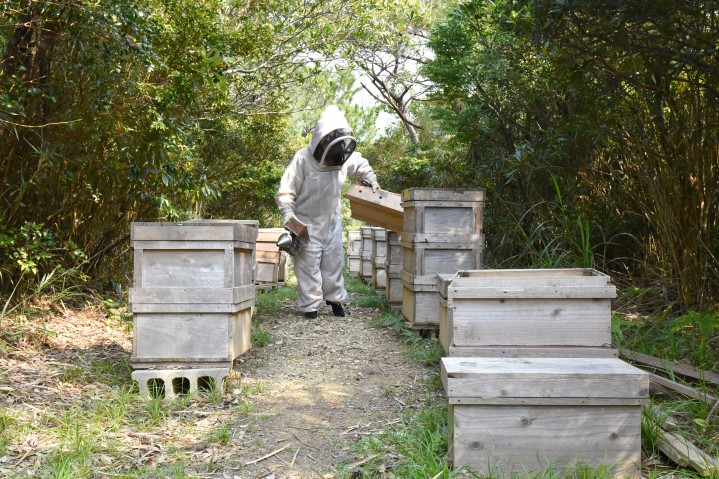
To test this idea, the team needed to study European and Japanese honeybees side-by-side. By raising the colonies in equal conditions, they could then compare and manipulate the microbiomes of the honeybees — and perhaps understand how any differences give rise to resistance in the Japanese honeybee. This information, in turn, could help put an end to colony collapse across the globe.
The team got to work, importing two Japanese colonies from the mainland to Okinawa. They were eager to begin solving an important global problem. The issue was that Japanese honeybees have hardly been studied compared to their European relatives — little is known about their biology and they are notoriously hard to raise. By the time the shipment arrived, one of the two colonies had already died. And then, just weeks into the study, the second colony collapsed.
It seemed like an end to the project, and that it would not be possible to study the honeybees side-by-side, after all. Until one day the team got a call. It was Kirino-san.
Let’s bee friends
Kirino-san found the Ecology and Evolution Unit while scanning applications for beekeepers. He figured that whoever had been applying to the Village Office to keep bees might know where to get some. After that first call, the teams set up a meeting to figure out how they could best help each other on their respective quests — to minimize red soil runoff, and to make sense of honeybee Varroa resistance.
To begin, the OIST team provided Onna Village with a selection of European and Japanese honeybee colonies. While the OIST team was unfamiliar with raising Japanese colonies, Kirino-san found some expert beekeepers who could do the job. The colonies flourished under their supervision. The outside experts have been teaching local Onna beekeepers how to raise their own Japanese honeybee colonies — allowing the project to grow locally and sustainably.
“Our next objective is to produce 50kg of artisanal Onna honey in the project’s first year,” says Kirino-san.
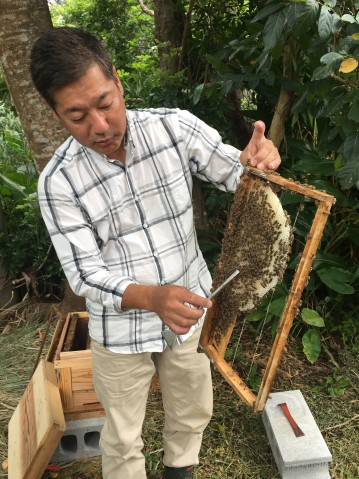
While this 50kg target makes for a fun and delicious metric, it would also indicate that the selected agricultural and abandoned plots are being used for the right purpose. Kirino-san will also open a space for visitors, including school groups and tourists, to learn about the project and sample some honey. Far from sugarcoating a complex issue, this space will allow the project to reach a wider audience. Beyond this initial awareness-raising phase, Kirino-san can next explore how to measure the impact on Okinawa’s reefs.
The OIST team, meanwhile, are waiting for the bees to settle into their new home. Soon, it may finally be possible to begin the study that had previously collapsed along with the Japanese colonies.
“With expertise from the beekeepers and support from Kirino-san, we hope to finally shed light on a pest having devastating economic impacts across the globe,” says Vienna.
While the collaboration is in its early stages, both teams are excited to see how things unfold. And beyond this project, this joint effort also sets the standard for future partnerships on the island. Just like the mutualistic relationship between flowers and bees, the Onna-OIST collaboration reaffirms tested wisdom from nature — mutualistic relationships are a good survival strategy.
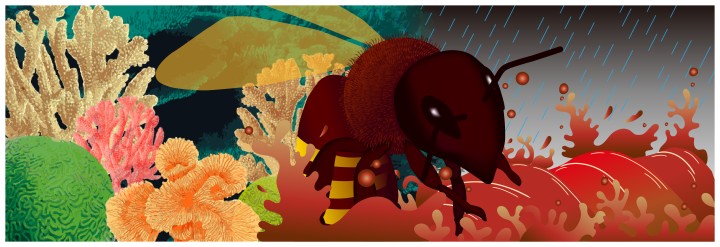
Specialties
For press enquiries:
Press Inquiry Form










